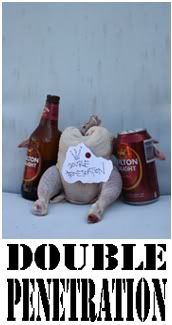The practice of applying hot tar and a coating of feathers to one's opponents was largely an American practice. The intent was clearly to intimidate. Dabbing hot tar on bare skin could cause painful blistering and efforts to remove it usually resulted in pulling out hairs. The use of solvents to loosen the tar was also unpleasant in the extreme, especially when a substance like turpentine came in contact with burned skin. Application of the tar over the rival's clothing was rightly deemed a lesser punishment than placing it on bare skin.
Thursday, January 21, 2016
The practice of applying hot tar and a coating of feathers to one's opponents was largely an American practice. The intent was clearly to intimidate. Dabbing hot tar on bare skin could cause painful blistering and efforts to remove it usually resulted in pulling out hairs. The use of solvents to loosen the tar was also unpleasant in the extreme, especially when a substance like turpentine came in contact with burned skin. Application of the tar over the rival's clothing was rightly deemed a lesser punishment than placing it on bare skin.
Just a few instances of this practice were recorded in the 1760s, but the passage of the Townshend Acts
provoked a sharp increase in its usage. It usually required the abuse
of only one tax collector in an area for word to spread quickly. Another
spate of incidents occurred around the Tea Act
in 1773. During the War for Independence, the tarring of Tories
happened with greater regularity and ferocity, resulting in the deaths
of several victims.
Tarring and feathering was a barbaric practice and, sadly, an effective one.
Subscribe to:
Post Comments (Atom)





 "Drunk at the matinee" is a collection of candid poetry about stupid shit that we all experience from day to day.
"Drunk at the matinee" is a collection of candid poetry about stupid shit that we all experience from day to day.







No comments:
Post a Comment